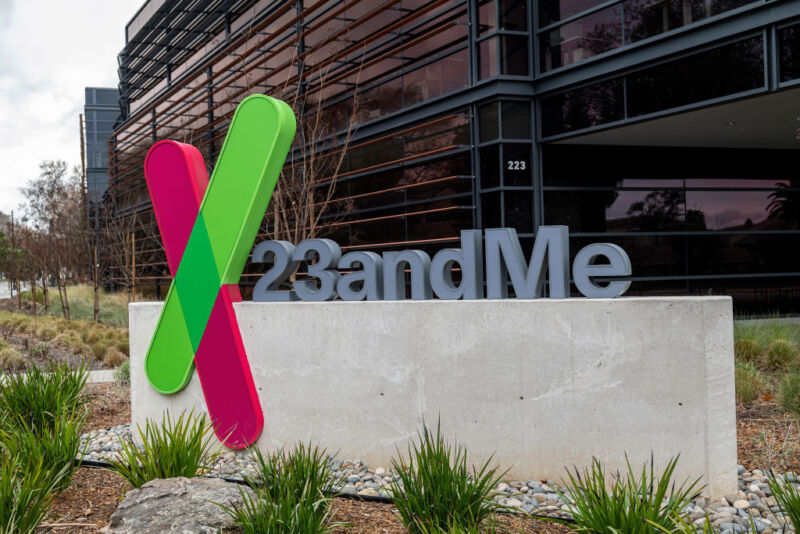In the first week of January, the pharmaceutical giant Merck quietly
settled its years-long lawsuit
over whether or not its property and casualty insurers would cover a $700 million claim filed after the devastating
NotPetya cyberattack
in 2017. The malware ultimately infected more than 40,000 of Merck’s computers, which significantly disrupted the company’s
drug and vaccine production
. After Merck filed its $700 million claim, the pharmaceutical giant’s insurers argued that they were not required to cover the malware’s damage because the cyberattack was widely attributed to the Russian government and therefore was excluded from standard property and casualty insurance coverage as a “hostile or warlike act.”
At the heart of the lawsuit was a crucial question: Who should pay for massive, state-sponsored cyberattacks that cause billions of dollars’ worth of damage?
One possible solution, touted by former Department of Homeland Security Secretary Michael Chertoff
on a recent podcast
, would be for the federal government to step in and help pay for these sorts of attacks by providing a cyber insurance backstop. A cyber insurance backstop would provide a means for insurers to receive financial support from the federal government in the event that there was a catastrophic cyberattack that caused so much financial damage that the insurers could not afford to cover all of it.
In his discussion of a potential backstop, Chertoff specifically references the
Terrorism Risk Insurance Act
(TRIA) as a model. TRIA was passed in 2002 to provide financial assistance to the insurers who were reeling from covering the costs of the Sept. 11, 2001, terrorist attacks. It also created the
Terrorism Risk Insurance Program
(TRIP), a public-private system of compensation for some terrorism insurance claims. The 9/11 attacks
cost insurers and reinsurers
$47 billion. It was one of the most expensive insured events in history and prompted many insurers to stop offering terrorism coverage, while others raised the premiums for such policies significantly, making them prohibitively expensive for many businesses. The government passed TRIA to provide support for insurers in the event of another terrorist attack, so that they would be willing to offer terrorism coverage again at reasonable rates. President Biden’s 2023
National Cybersecurity Strategy
tasked the Treasury and Homeland Security Departments with investigating possible ways of implementing something similar for large cyberattacks.
There is a growing (and unsurprising)
consensus among insurers
in favor of the creation and implementation of a federal cyber insurance backstop. Like terrorist attacks, catastrophic cyberattacks are difficult for insurers to predict or model because there is not very good historical data about them—and even if there were, it’s not clear that past patterns of cyberattacks will dictate future ones. What’s more, cyberattacks could cost insurers astronomic sums of money, especially if all of their policyholders were simultaneously affected by the same attack. However, despite this consensus and the fact that this idea of the government acting as the “insurer of last resort” was first floated
more than a decade ago
, actually developing a sound, thorough proposal for a backstop has proved to be much more challenging than many insurers and policymakers anticipated.
One major point of issue is determining a threshold for what types of cyberattacks should trigger a backstop. Specific characteristics of cyberattacks—such as who perpetrated the attack, the motive behind it, and total damage it has caused—are often exceedingly difficult to determine. Therefore, even if policymakers could agree on what types of attacks they think the government should pay for based on these characteristics, they likely won’t be able to calculate which incursions actually qualify for assistance.
For instance, NotPetya is estimated to have caused
more than $10 billion in damage
worldwide, but the quantifiable amount of damage it actually did is unknown. The attack caused such a
wide variety
of
disruptions
in so many different industries, many of which likely went unreported since many companies had no incentive to publicize their security failings and were not required to do so. Observers do, however, have a pretty good idea who was behind the NotPetya attack because several governments, including the United States and the United Kingdom, issued
coordinated
statements
blaming the Russian military. As for the motive behind NotPetya, the program was initially transmitted through
Ukrainian accounting software
, which suggests that it was intended to target Ukrainian critical infrastructure. But notably, this type of coordinated, consensus-based attribution to a specific government is relatively rare when it comes to cyberattacks. Future attacks are not likely to receive the same determination.
In the absence of a government backstop, the insurance industry has begun to carve out larger and larger exceptions to their standard cyber coverage. For example, in a
pair of rulings
against Merck’s insurers, judges in New Jersey ruled that the insurance exclusions for “hostile or warlike acts” (such as the
one in Merck’s property policy
that excluded coverage for “loss or damage caused by hostile or warlike action in time of peace or war … by any government or sovereign power”) were not sufficiently specific to encompass a cyberattack such as NotPetya that did not involve the use of traditional force.
Accordingly, insurers such as
Lloyd’s
have begun to change their policy language to explicitly exclude broad swaths of cyberattacks that are perpetrated by nation-states. In an
August 2022 bulletin
, Lloyd’s instructed its underwriters to exclude from all cyber insurance policies not just losses arising from war but also “losses arising from state backed cyber-attacks that (a) significantly impair the ability of a state to function or (b) that significantly impair the security capabilities of a state.” Other insurers,
such as Chubb
, have tried to avoid tricky questions about attribution by suggesting a government response-based exclusion for war that only applies if a government responds to a cyberattack by authorizing the use of force. Chubb has also introduced explicit definitions for cyberattacks that pose a “systemic risk” or impact multiple entities simultaneously. But most of this language has not yet been tested by insurers trying to deny claims. No one, including the companies buying the policies with these exclusions written into them, really knows exactly which types of cyberattacks they exclude. It’s not clear what types of cyberattacks courts will recognize as being state-sponsored, or posing systemic risks, or significantly impairing the ability of a state to function. And for the policyholders’ whose insurance exclusions feature this sort of language, it matters a great deal how that language in their exclusions will be parsed and understood by courts adjudicating claim disputes.
These types of recent exclusions leave a large hole in companies’ coverage for cyber risks, placing even more pressure on the government to help. One of the reasons Chertoff gives for why the backstop is important is to help clarify for organizations what cyber risk-related costs they are and are not responsible for. That clarity will require very specific definitions of what types of cyberattacks the government will and will not pay for. And as the insurers know, it can be quite difficult to anticipate what the next catastrophic cyberattack will look like or how to craft a policy that will enable the government to pay only for a narrow slice of cyberattacks in a varied and unpredictable threat landscape. Get this wrong, and the government will end up writing some very large checks.
And in comparison to insurers’ coverage of terrorist attacks, large-scale cyberattacks are much more common and affect far more organizations, which makes it a far more costly risk that no one wants to take on. Organizations don’t want to—that’s why they buy insurance. Insurance companies don’t want to—that’s why they look to the government for assistance. But, so far, the U.S. government doesn’t want to take on the risk, either.
It is safe to assume, however, that regardless of whether a formal backstop is established, the federal government would step in and help pay for a sufficiently catastrophic cyberattack. If the electric grid went down nationwide, for instance, the U.S. government would certainly help cover the resulting costs. It’s possible to imagine any number of catastrophic scenarios in which an ad hoc backstop would be implemented hastily to help address massive costs and catastrophic damage, but that’s not primarily what insurers and their policyholders are looking for. They want some reassurance and clarity up front about what types of incidents the government will help pay for. But to provide that kind of promise in advance, the government likely would have to pair it with some security requirements, such as implementing multifactor authentication, strong encryption, or intrusion detection systems. Otherwise, they create a moral hazard problem, where companies may decide they can invest less in security knowing that the government will bail them out if they are the victims of a really expensive attack.
The U.S. government has been looking into the issue for a while, though, even before the 2023 National Cybersecurity Strategy was released. In 2022, for instance, the Federal Insurance Office in the Treasury Department published a
Request for Comment
on a “Potential Federal Insurance Response to Catastrophic Cyber Incidents.” The responses recommended a variety of different possible backstop models, ranging from expanding TRIP to encompass certain catastrophic cyber incidents, to creating a new structure similar to the
National Flood Insurance Program
that helps underwrite flood insurance, to trying a public-private partnership backstop model similar to the United Kingdom’s
Pool Re
program.
Many of these responses rightly noted that while it might eventually make sense to have some federal backstop, implementing such a program immediately might be premature. University of Edinburgh Professor Daniel Woods, for example, made a compelling case for why it was too soon to institute a backstop in
Lawfare
last year. Woods
wrote
,
One might argue similarly that a cyber insurance backstop would subsidize those companies whose security posture creates the potential for cyber catastrophe, such as the NotPetya attack that caused $10 billion in damage. Infection in this instance could have been prevented by basic cyber hygiene. Why should companies that do not employ basic cyber hygiene be subsidized by industry peers? The argument is even less clear for a taxpayer-funded subsidy.
The answer is to ensure that a backstop applies only to companies that follow basic cyber hygiene guidelines, or to insurers who require those hygiene measures of their policyholders. These are the types of controls many are familiar with: complicated passwords, app-based two-factor authentication, antivirus programs, and warning labels on emails. But this is easier said than done. To a surprising extent, it is difficult to know which security controls really work to improve companies’ cybersecurity. Scholars know what they think works: strong encryption, multifactor authentication, regular software updates, and automated backups. But there is not anywhere near as much empirical evidence as there ought to be about how effective these measures are in different implementations, or how much they reduce a company’s exposure to cyber risk.
This is largely due to companies’ reluctance to share detailed, quantitative information about cybersecurity incidents because any such information may be used to criticize their security posture or, even worse, as evidence for a government investigation or class-action lawsuit. And when insurers and regulators alike try to gather that data, they often run into
legal roadblocks
because these investigations are often run by lawyers who claim that the results are shielded by attorney-client privilege or work product doctrine. In some cases, companies don’t write down their findings at all to avoid the possibility of its being used against them in court. Without this data, it’s difficult for insurers to be confident that what they’re requiring of their policyholders will really work to improve those policyholders’ security and decrease their claims for cybersecurity-related incidents under their policies. Similarly, it’s hard for the federal government to be confident that they can impose requirements for a backstop that will actually raise the level of cybersecurity hygiene nationwide.
The key to managing cyber risks—both large and small—and designing a cyber backstop is determining what security practices can effectively mitigate the impact of these attacks. If there were data showing which controls work, insurers could then require that their policyholders use them, in the same way they require policyholders to install smoke detectors or burglar alarms. Similarly, if the government had better data about which security tools actually work, it could establish a backstop that applied only to victims who have used those tools as safeguards. The goal of this effort, of course, is to improve organizations’ overall cybersecurity in addition to providing financial assistance.
There are a number of ways this data could be collected. Insurers could do it through their claims databases and then aggregate that data across carriers to policymakers. They did this for car safety measures starting in the 1950s, when a group of insurance associations founded the
Insurance Institute for Highway Safety
. The government could use its increasing reporting authorities, for instance under the
Cyber Incident Reporting for Critical Infrastructure Act of 2022
, to require that companies report data about cybersecurity incidents, including which countermeasures were in place and the root causes of the incidents. Or the government could establish an entirely new entity in the form of a
Bureau for Cyber Statistics
that would be devoted to collecting and analyzing this type of data.
Scholars and policymakers can’t design a cyber backstop until this data is collected and studied to determine what works best for cybersecurity. More broadly, organizations’ cybersecurity cannot improve until more is known about the threat landscape and the most effective tools for managing cyber risk.
If the cybersecurity community doesn’t pause to gather that data first, then it will never be able to meaningfully strengthen companies’ security postures against large-scale cyberattacks, and insurers and government officials will just keep passing the buck back and forth, while the victims are left to pay for those attacks themselves.
Lawfare.
 chevron_right
chevron_right





